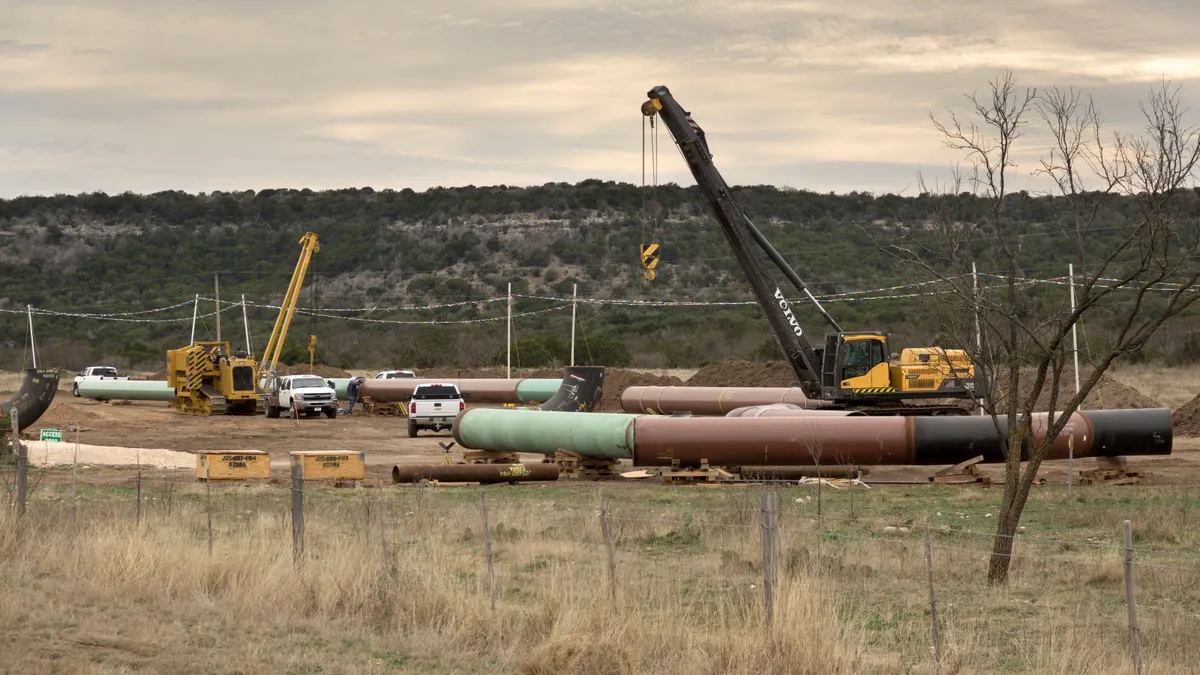Five governors are urging the PJM Interconnection to reform its capacity market rules and interconnection queue process to prevent “unnecessary” costs for electricity customers.
PJM’s last capacity auction in July will cost consumers a “staggering” $14.7 billion, which could hurt economic development, according to a letter from the governors of Delaware, Illinois, Maryland, New Jersey and Pennsylvania sent Friday to PJM.
“We remain concerned that the current years-long PJM interconnection process severely limits the ability of high capacity prices to encourage the development of additional capacity,” the governors said. “If developers cannot expect to get through the interconnection queue before a reasonably near-term delivery year, then additional energy projects cannot be deployed in time – no matter how high prices rise.”
The governors said they support PJM’s plan to delay the upcoming auction by about six months so it can work with stakeholders to make changes to its market rules.
The Organization of PJM States, Inc., the PJM’s independent market monitor and the PJM Power Providers Group, or P3 Group, which represents generators, support various market reforms. The Sierra Club and other environmental groups filed a complaint arguing that PJM’s rules for reliability must-run units unfairly increases capacity prices and should be changed. Separately, the governors on Friday told the Federal Energy Regulatory Commission they support the complaint and PJM’s plan to delay a capacity auction that is set to be held in early December.
The governors asked PJM to include RMR units in upcoming capacity auctions, noting that OPSI, the market monitor and the groups behind the complainant say that making the change would save consumers between $3 billion and $5 billion in the next auction without undermining market competitiveness or necessary price signals.
They also called for:
- Eliminating the must-offer exemption for intermittent resources, while protecting them from performance penalties that discourage market participation;
- Lowering the capacity price cap to the level it was before PJM’s recent capacity market reforms;
- Reviewing recent effective load carrying capability accreditation changes and adjusting them to improve their accuracy; and,
- Adopting a subannual capacity market designed to reduce risk on the transmission system as soon as possible.
Without the changes, analysts expect the next auction could cost more than $30 billion, they said.
The governors look forward to working on PJM’s Reliability Resource Initiative, including finding an appropriate role for states to help identify “shovel ready” projects for the potential accelerated interconnection review process, according to the letter.
“Urgent action is needed to prevent customers from paying billions more than is necessary to support the development of needed capacity, and to reform the interconnection queue so developers can promptly respond to prices by providing new supply,” the governors said.
“We appreciate the correspondence and will be evaluating the requests made with the stakeholder body in the very near future,” Jeffrey Shields, a PJM spokesman, said in an email.
It is “great to see” the five PJM governors recognize the need for more resources on the grid to meet rising demand, according to Glen Thomas, P3 Group president. “Hopefully, they will use this opportunity to look at their own state’s policies to determine how those policies are contributing to the current power supply demand challenges,” Thomas said in an email Monday.
LS Power eyes $8 billion in PJM investment
Meanwhile, Calpine and LS Power told FERC on Friday they oppose the environmental groups’ “misbegotten” RMR complaint. However, they said they support resetting the parameters PJM uses in its capacity auctions, such as how much capacity the grid operator plans to buy in local deliverability areas.
PJM’s capacity market has not operated consistently or transparently for a number of years, which can stifle investment, according to LS Power Development. It appears that PJM needs new resources to meet demand, but “based on the level of change and uncertainty in the recent past, and caused by this current proceeding, whether market prices will provide a sufficiently robust investment incentive is not clear,” said Nathan Hanson, president of LS Power Generation.
After the July capacity auction, LS Power identified about $3 billion in potential investments in PJM’s footprint totaling more than 2,400 MW, including 800 MW in “near term” capacity, according to Hanson.
LS Power is also considering more than 2,000 MW of battery storage at 11 sites in the PJM footprint with a total potential investment of over $5 billion, Hanson said. A few of the projects could be online for the 2027/28 delivery year, he said.
“These types of projects require us to develop long-term capacity market revenue expectations that will underpin the capital investment,” Hanson said. “However, the lack of stable market rules undermining price signals and expectations of risk will hinder our ability to deploy the levels of capital required to bring these projects online.”






















